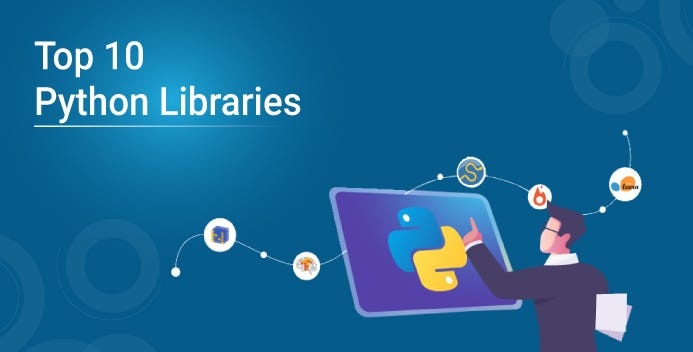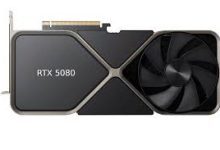Top 10 Python programming libraries Every Programmer Must Know

Unleashing the true potential of Python begins with mastering its powerful libraries. Whether you’ve just begun to learn Python coding or are continuing your journey online, understanding these libraries can tremendously enhance your coding efficiency. This arsenal of pre-written code can be your secret weapon to tackle various programming tasks, from data analysis to machine learning.
Let’s dive into the top 10 Python libraries that every programmer must know to truly harness the power of this versatile language. Get ready to unlock a new level of Python proficiency!
NumPy
When you learn Python programming, one library you’ll encounter early on is NumPy, an essential tool for numerical computing. NumPy, an acronym for Numerical Python, offers robust support for handling substantial multi-dimensional arrays and matrices. This is coupled with an extensive assortment of mathematical functions that work seamlessly on these arrays. For developers in data science, engineering, and research fields, NumPy’s ability to perform high-performance operations on large arrays of data is unmatched. Its unique features include robust n-dimensional arrays, advanced broadcasting capabilities, and tools for integrating C and C++ code.
Pandas
Pandas serves as a powerhouse in the Python ecosystem, especially for those embarking on the path of data manipulation and examination. It equips programmers with flexible data structures capable of handling numerical tables and time-series data with ease. Pandas shines in simplifying tasks such as data wrangling and data exploration. Its unique propositions include the DataFrame object that allows fluid data manipulation with inbuilt indexing, efficient tools for translating data between different file formats, and performance-optimized methods for merging and joining datasets.
Matplotlib
Matplotlib is a pivotal library in Python’s ecosystem for visualizing data. It’s designed to create static, animated, and interactive plots in a simple and straightforward way. With Matplotlib, you can transform your numerical data into a wide array of visualization forms such as histograms, bar charts, and scatterplots, among others. Its standout features include the capability to create complex visualizations with few lines of code and extensive customization options for styles, fonts, axes properties, ensuring you have the right tools to tell your data’s story effectively.
TensorFlow
As you continue to learn Python programming, you’ll come across TensorFlow, a powerhouse in the realm of machine learning and artificial intelligence. Developed by Google Brain Team, TensorFlow is a free and open-source library used for high-performance numerical computation, machine learning, and deep learning. Its flexible architecture allows seamless computation deployment across a variety of platforms.
TensorFlow’s unique offerings include TensorBoard for data visualization, efficient GPU or TPU computation, and automatic differentiation and gradients, making it indispensable for large-scale machine learning tasks.
SciPy
SciPy is another library that deserves attention as you learn Python coding. This free and open-source Python library is used for scientific and technical computing. It builds on NumPy, and for many types of scientific and computational applications, it is an efficient tool. SciPy’s primary functionality is built upon NumPy, and its array makes up the majority of the package.
SciPy is applauded for its distinctive features, including modules for various tasks such as optimization, linear algebra, integration, and interpolation. It also excels in providing special functions, fast Fourier transforms (FFT), and processes for signal and image manipulation, among other capabilities.
Keras
Keras is a must-know for anyone aiming to learn Python programming. Keras operates as an elevated neural network API, engineered in Python and proficiently designed to operate over TensorFlow, CNTK, or Theano. It’s popular for providing Python interfaces to artificial neural networks. Its minimalist, modular approach makes building and prototyping deep learning models much easier. The library emphasizes being user-friendly, modular, and easy to extend.
Its unique features include support for convolutional and recurrent neural networks, easy and fast prototyping, and multi-backend, multi-platform capabilities. It also supports both CPU and GPU computation.
PyTorch
PyTorch is an open-source machine learning library for Python, based on Torch, a free and open-source deep learning library. Used primarily for applications such as natural language processing, it is lauded for its simplicity and ease of use. PyTorch is gaining popularity for its dynamic computational graphs, which allow for flexibility and speed. Its unique features include native support for advanced network architectures, tools for sharing and collaborating on models, and the ability to leverage either CPUs or GPUs for computation.
Scikit-Learn
Scikit-Learn, a Python library highly regarded in the realm of machine learning, offers an assortment of effective tools tailored for statistical modeling. This includes solutions for classification, regression, clustering, and dimensionality reduction, all accessible via a consistent Pythonic interface. Scikit-Learn’s core functionality is fortified by NumPy, SciPy, and matplotlib, marking it an integral component of Python’s scientific computing suite. Its distinctive attributes encompass intuitive tools for data mining and analysis, a rich repository of machine learning algorithms, and handy built-in modules for cross-validation and hyperparameter tuning.
Seaborn
Seaborn is another important data visualization library in Python. Seaborn extends Matplotlib’s capabilities, offering an elevated interface to design aesthetically pleasing and informative statistical graphics. Seaborn comes with inbuilt themes to style matplotlib visuals and provides tools for selecting color schemes, enabling the creation of stunning plots that effectively illustrate patterns within your data. Seaborn’s unique features include functions to visualize complex random distributions, support for multi-variable analysis, and automatic estimation and plotting of linear regression models.
Flask
Flask is a robust microweb framework crafted in Python. Its distinguishing trait is its ‘micro’ nature, implying it doesn’t impose any dependencies on specific tools or libraries. This feature allows it the flexibility to be just as effective in small and simple applications as it is in large, complex ones. Flask’s expansive ecosystem also supports a plethora of extensions that seamlessly blend in as native features of the framework.
These extensions diversify Flask’s capabilities, covering areas such as form validation, handling file uploads, and various open authentication technologies. Its unique properties include its adaptability and pliability, lightweight and minimalist architecture, and the availability of numerous extensions for augmenting functionality.
Conclusion
In the realm of Python programming, these top ten libraries are the cornerstone to unlocking a wide array of powerful functionalities. Each library, with its unique features and capabilities, offers you the tools to solve complex problems, analyze data, develop applications, and much more. The practical understanding and use of these libraries are what differentiates an ordinary coder from an extraordinary one. Hence, do not shy away from experimenting and pushing the boundaries with these libraries. And remember, if you ever feel the need to dive deeper or refresh your skills, an online Python programming course is just a click away. Happy coding!


